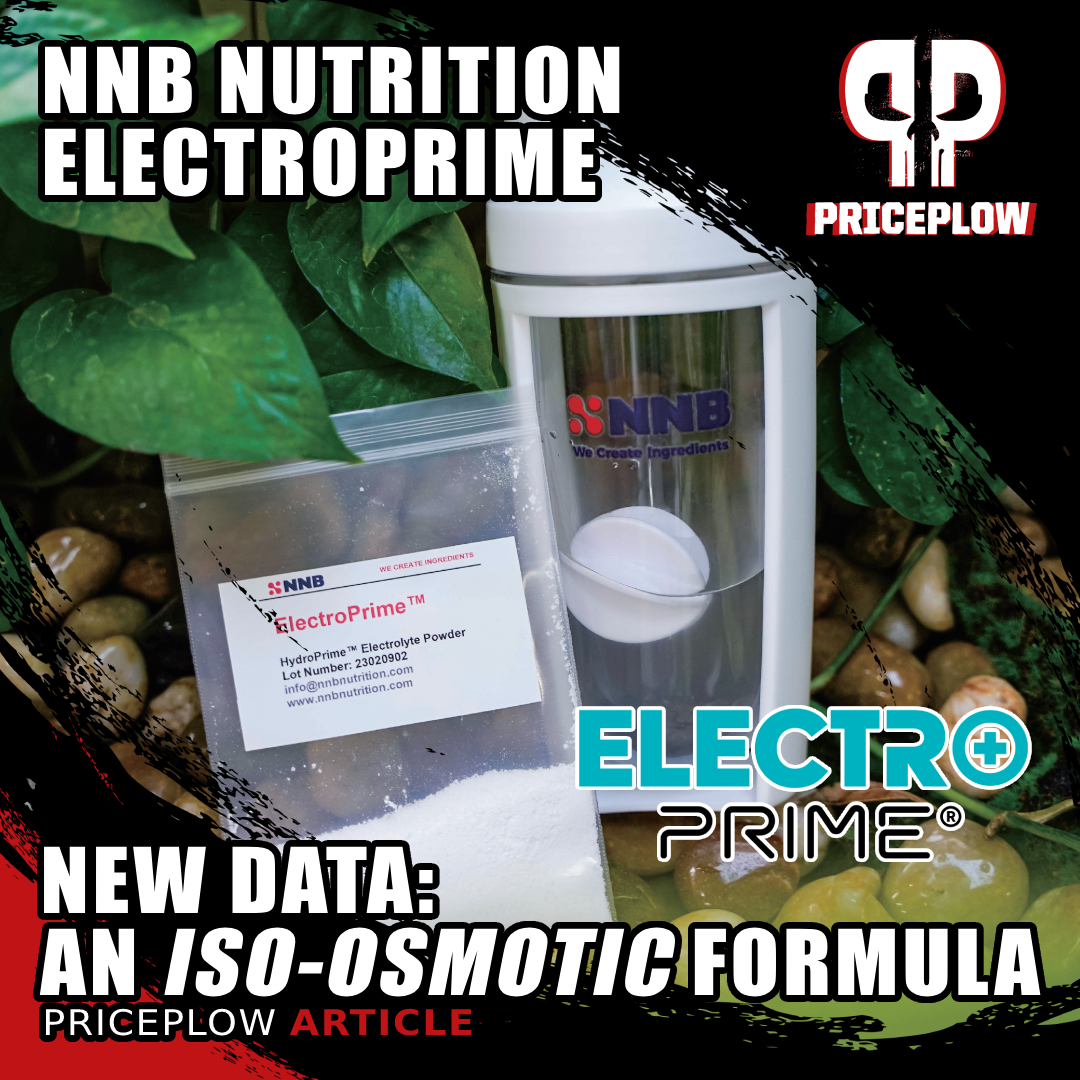
NNB Nutrition's ElectroPrime™ is a low-carb ingredient that is set to revolutionize the hydration market with its unique blend of glycerol, glucose, and electrolytes.
By now, we've all heard that electrolyte balance is absolutely crucial for overall hydration, which ultimately affects not only your athletic performance recovery, but also your health, and potentially, your longevity.
The question we need to answer is which electrolyte formula is best? As always, not all supplements are created equal, and not everyone's mineral requirements are the same.
Here at the PricePlow Blog, we've written several articles summarizing research literature on the effects of hydration supplements. There's no shortage of studies comparing key hydration endpoints and their effects on athletic performance.
Rarely, though, do we get into the weeds on how hydration supplements differ from each other mechanistically. But today, thanks to a rather unique study on NNB Nutrition's ElectroPrime, we're going to do exactly that.
What is ElectroPrime?
NNB Nutrition's ElectroPrime™ is a low-carb ingredient designed specifically for hydration -- it consists of a combination of glycerol, glucose, and electrolytes, including sodium, potassium, and magnesium.
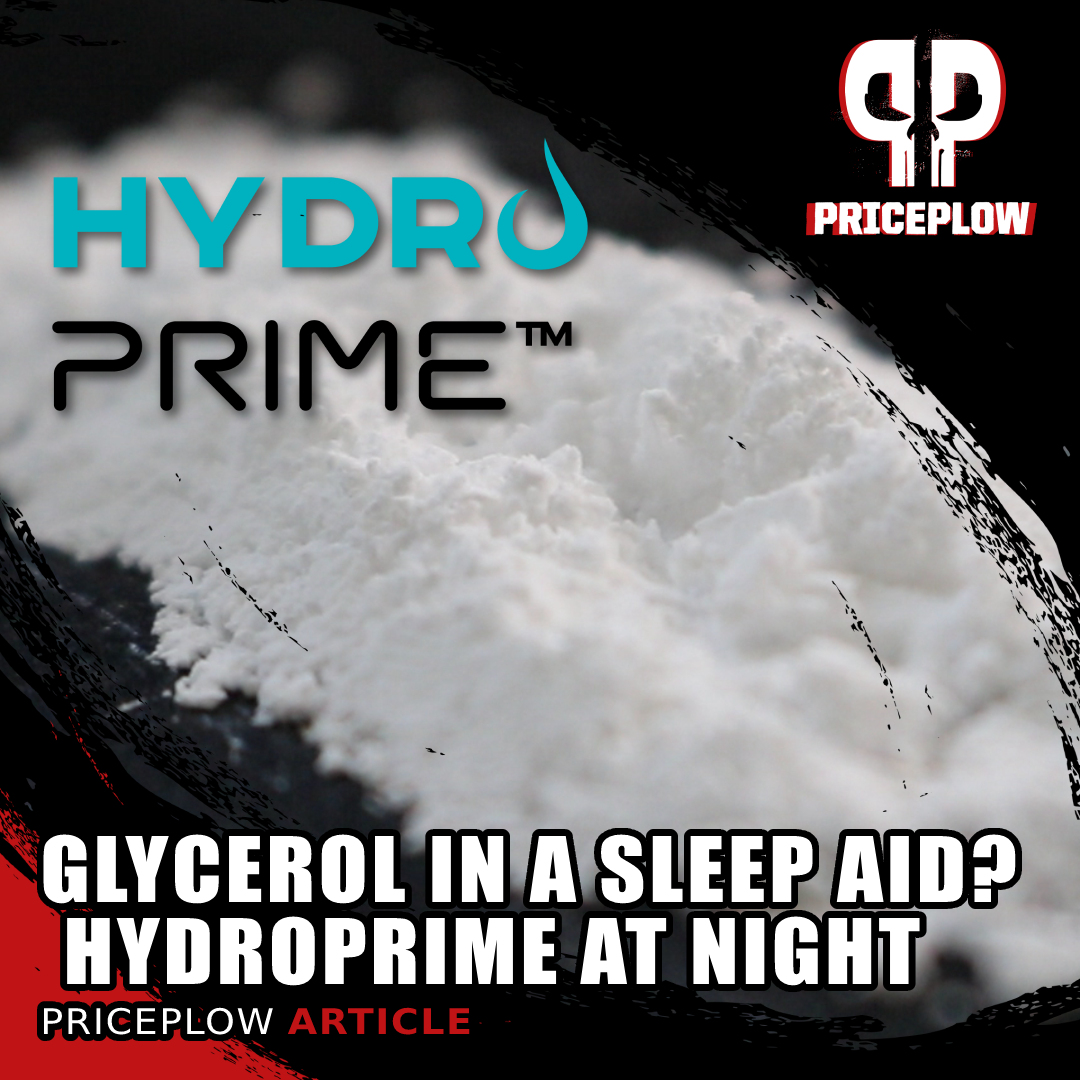
Too much urination at night when taking powdered sleep aids? Why not add glycerol to keep some of that water in?
NNB is well-known for HydroPrime, their industry-leading glycerol powder that's been stabilized to reduce clumping. Using HydroPrime's technology, they were able to make a shelf-stable electrolyte solution that boosts hydration thanks to the inclusion of glycerol, which is able to induce a state of "hyperhydration". They named it ElectroPrime.
This combination of ingredients can provide improved hydration status beyond standard hydration formulas, and it can help the body maintain water balance with a comprehensive hydration effect. But NNB Nutrition wanted to see how it performed in action, so they put it to the test in an osmotic pressure study detailed in this article.
Before getting into the study, we must first explain the background:
Hydration – A Primer
Osmotic pressure is a critical concept in physiology and chemistry, and it's the key concept behind human hydration and electrolyte balance. In the simplest terms, osmotic pressure refers to the force exerted by solutes in a solution to draw water across a semipermeable membrane.[1] This process is known as osmosis.
When it comes to hydration, the semipermeable membranes in question are the phospholipid bilayer membranes that enclose the contents of all your body's cells. This makes osmosis vital for maintaining cellular health – when a solution has the correct osmotic pressure, water flows into cells efficiently, thus enabling proper cellular function, hydration, and nutrient absorption.
So, the osmotic pressure of a hydration solution plays a critical role in determining how effective the product is at hydrating the body and maintaining electrolyte balance. When a person loses fluids through sweat, that person loses only water, but also sodium, potassium, calcium, magnesium, and chloride. If the solution ingested to replace these losses is not iso-osmotic, it can disrupt the body's ability to effectively rehydrate and balance electrolytes.
The ideal for any hydration supplement is to help your body achieve osmotic equilibrium. If the supplement disrupts this equilibrium, it's likely to have a counterproductive effect.
For instance, a solution with too high osmotic pressure (hyper-osmotic) can cause dehydration, because such solutions draw water out of the body's cells and into the digestive tract, which can lead to discomfort such as bloating, nausea, or diarrhea.[2] Obviously, diarrhea wastes a lot of water, and can lead to catastrophic dehydration all on its own.
-
Low sodium: when hydration goes wrong
On the other hand, a solution with too low osmotic pressure (hypo-osmotic) can cause an excess of water to flood into cells, potentially leading to cell swelling or edema. For ordinary people, this probably isn't of any practical concern. But in extreme cases, such as when you're working very hard in an incredibly hot environment, this can result in hyponatremia, a condition where the sodium concentration in the blood becomes dangerously diluted.
Hyponatremia occurs because excess water intake reduces the concentration of sodium in the extracellular fluid, which disrupts the balance between sodium and water. As water continues to enter the cells, particularly in tissues like the brain, it can lead to swelling (cerebral edema), causing symptoms ranging from headaches and nausea to seizures or, in severe cases, coma and death.[3]
Exercise-associated hyponatremia, which is a very real concern for all types of competitive athlete,[4] is exactly the thing any good hydration supplement should be specifically designed to prevent.
Hyponatremia is a risk when drinking plain water, especially after losing a lot of sodium in sweat -- it's the main reason for hydration formulas to exist in the first place.[5]
-
What We Want Is An Iso-Osmotic Solution
Iso-osmotic solutions, on the other hand, maintain the same osmotic pressure as bodily fluids after ingestion, ultimately preserving the balanced and efficient movement of water into and out of cells, and ensuring the body can properly rehydrate without disruptions to its delicate, all-important balance of electrolytes.
Considering the role of carbohydrates
Additionally, carbohydrates play a significant role in electrolyte absorption and hydration enhancement. This is because of the small intestine's sodium-glucose cotransporter SGLT1, which transports glucose and sodium together, pulling water along with them.[6,7]
Most hydration supplements contain sodium in an attempt to keep the mineral balanced in the wake of fluid loss, and many also include at least some carbohydrates and/or glucose to enhance its effect. But there's another factor we can consider: how the hyperhydration properties of glycerol can make an impact.
NNB's new study explores this:
New Internal Study – NNB’s ElectroPrime Is An Iso-Osmotic Formula
Fortunately for us, it just got a little easier to find the right balance. That's thanks to a recent internal study that directly compared the osmotic pressure of NNB's ElectroPrime to several commercial electrolyte products, demonstrating in the process that ElectroPrime is a true iso-osmotic formula.
In this study, five different top-selling hydration solutions were evaluated, including some that are low-carb, one with zero sugar, and one with cane sugar. The study measured the osmotic pressure of each solution based on the concentrations recommended by its brand.[8]
The results were striking: while the commercial products had osmotic pressures ranging from 117 to 246 mosmol/kg, ElectroPrime measured between 295-298 mosmol/kg,[8] which falls within the isotonic range of 300±10% mosmol/kg.[9]
The study used a freezing point depression osmometer to determine osmotic pressure, simulating conditions akin to those in the human body.[8,9] The device works by measuring how much the freezing point of a solution drops as solutes are dissolved into it. As the number of solute particles increases, the freezing point continues to decrease, allowing scientists to calculate the concentration of particles in the solution.
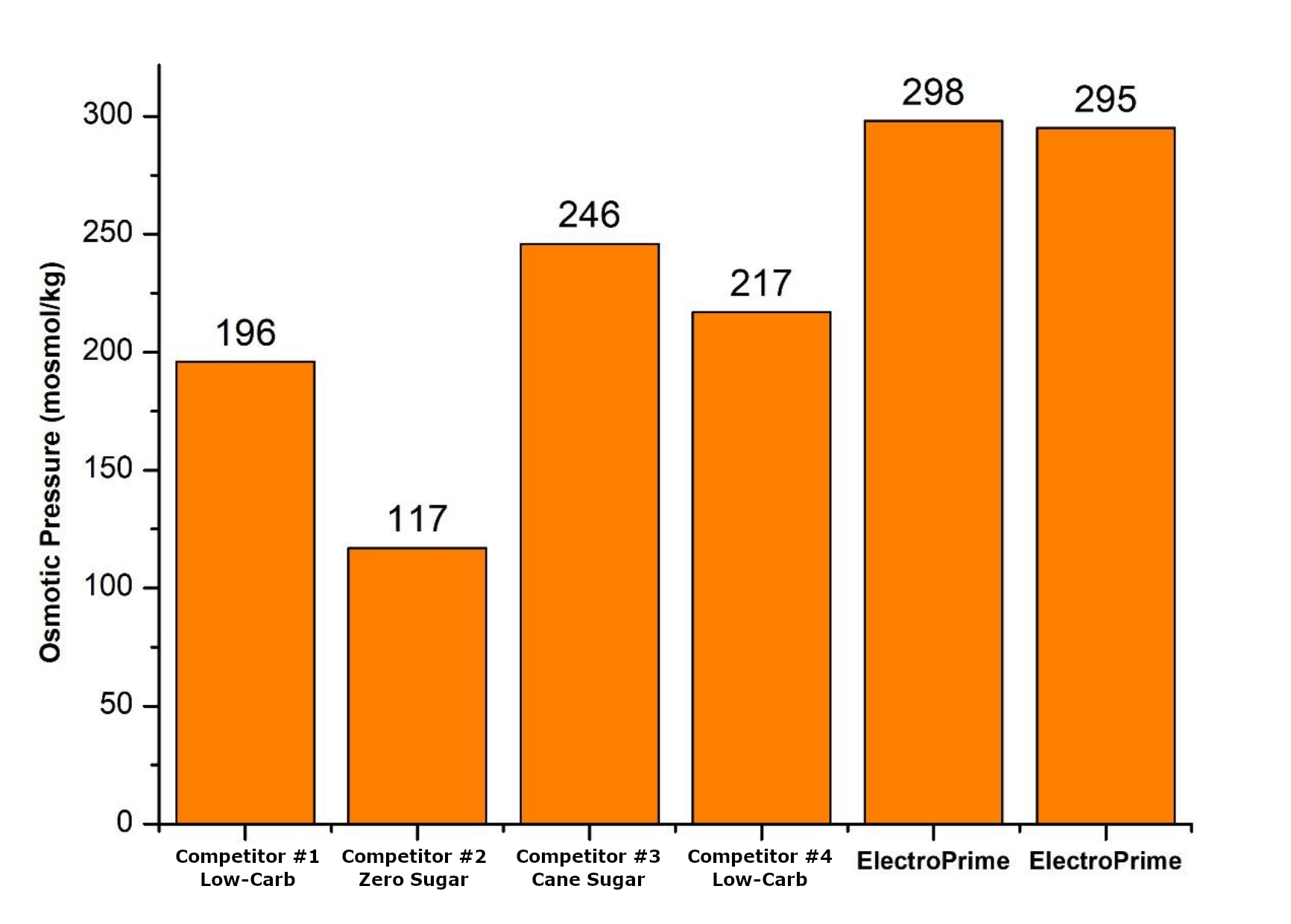
Of the tested products, only ElectroPrime achieved true isotonicity,[8] within the EFSA's recommended range of 300±10% mosmol/kg.[9]
Using this method, the study authors found that top-selling products did not show isotonicity, meaning they can't hydrate or balance electrolytes as effectively as ElectroPrime (or, more accurately, a supplement that's formulated with ElectroPrime).
These are quality products, but there's a big differentiator here: glycerol.
Consistent WIth Previous Studies Showing Glycerol’s Efficacy
This confirmation of ElectroPrime's isotonicity should come as no surprise to us, since several studies have already shown that its trademarked combination of electrolytes and glycerol enhances fluid retention, endurance, and overall hydration better than electrolyte-only or glycerol-only products.
One such study demonstrated that compared to sodium-induced hyperhydration (SIH) or glycerol-induced hyperhydration (GIH), ElectroPrime's sodium-glycerol-induced hyperhydration (SGIH) was far more effective, leading to a 28.9% reduction in urine production and 27.3% increase in fluid retention compared to sodium alone.[10] This finding is crucial for athletes, since retaining extra fluid can help prevent dehydration and maintain performance levels over extended periods.
Additionally, another experiment found that glycerol supplementation decreased urine volume by 700 mL and maintained a cellular hyperhydrated state for up to 49 hours. Again, thanks to its combination of glycerol and balanced electrolytes, ElectroPrime extends the period during which the body can remain effectively hydrated, allowing for better endurance and recovery.[11]
Finally, a third study showed that time to exhaustion during exercise increased by 24% after administering glycerol in combination with electrolytes, with subjects exercising for an average of 94 minutes compared to 44 minutes for those who took a placebo. Mean heart rate was also lowered by 4.4 beats/min in the glycerol group, which underscores the importance of hydration for health.[12]
The point is clear: glycerol is an incredible hydration agent, but combined with sodium, potassium, and magnesium, it's now an industry leader in a category that's due for some disruption.
Conclusion: ElectroPrime is Poised to Reignite the Hydration Space
The osmotic pressure study only confirms something that savvy industry observers have long known – glycerol is a star ingredient in the hydration formula product category, which has been growing in the early 2020s but has stalled out a bit in 2024. We now have an ingredient to provide the next level up: ElectroPrime.
We're now extremely confident that ElectroPrime promotes efficient water and electrolyte absorption by maintaining the osmotic equilibrium of bodily fluids, thus reducing the risks associated with hypo- or hyper-osmotic typical of other products.

NNB Nutrition is an innovative ingredient development company with an elite team of over 100 scientists from over 10 countries.
The science is straightforward: including glycerol adds a further layer of hydration, enabling longer-lasting fluid retention and enhanced athletic performance. This mechanism has been well-known for a while, but NNB Nutrition's the company to make powdered glycerol more stable, thanks to their development on HydroPrime over the years.
ElectroPrime represents the next generation of hydration products – one that truly ensures optimal fluid balance, enhanced endurance, and better overall health for athletes and anyone needing superior hydration. To stay tuned, you can sign up for our NNB Nutrition news on PricePlow:
Subscribe to PricePlow's Newsletter and Alerts on These Topics
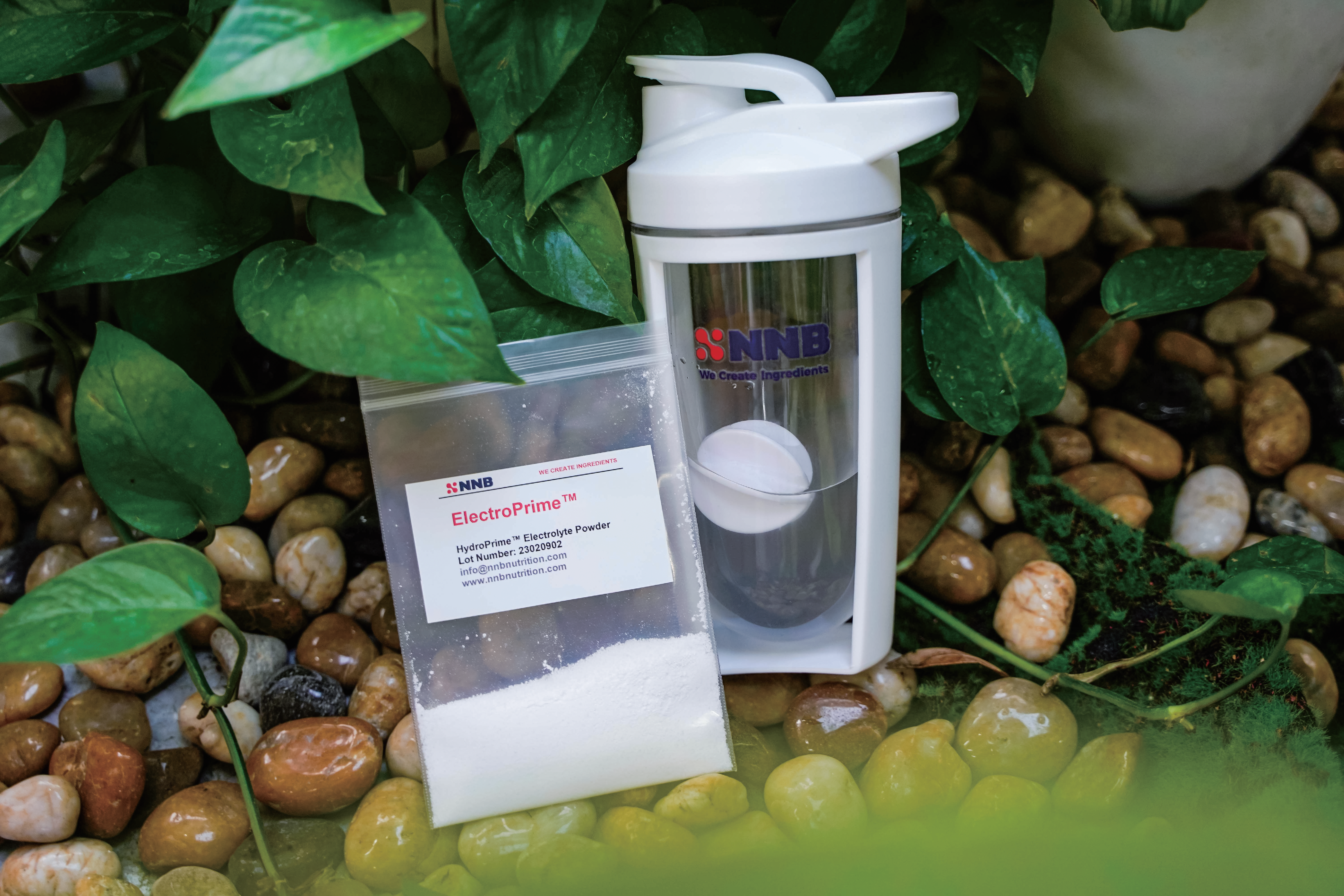
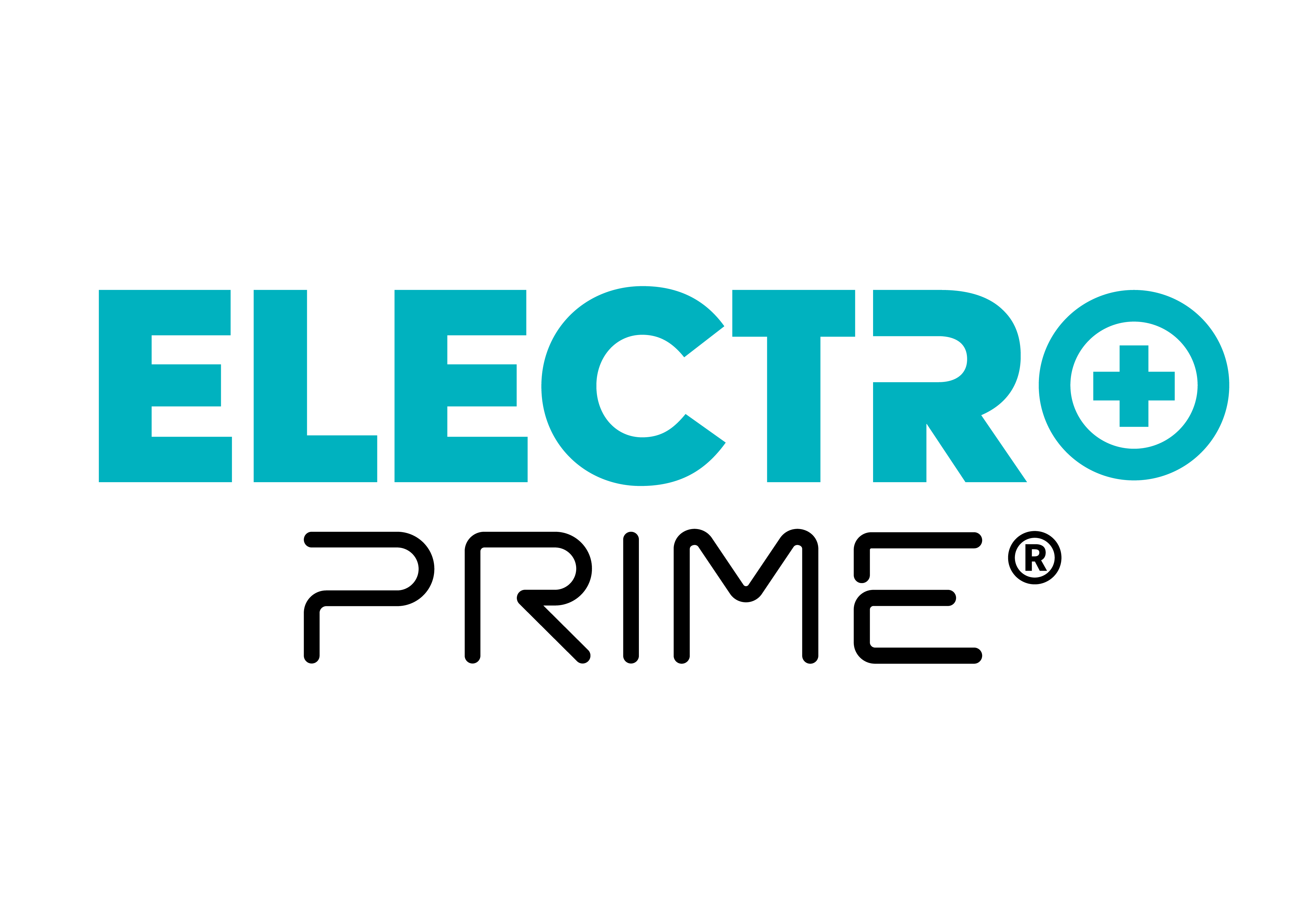



Comments and Discussion (Powered by the PricePlow Forum)